ALL THE WORLD'S A STAGE
Incorporating Dramatic Arts and Dance into the Classroom
Introduction | Background Knowledge | Activities | Extensions | Standards
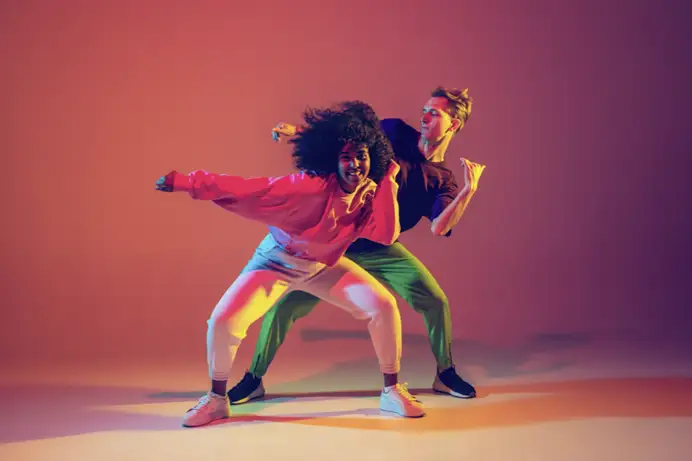
Introduction
When teachers think of adding dramatic arts to the classroom, minds immediately go to Reader's Theater. Dance is included in brain breaks. However, teachers can incorporate dramatic arts and dance into the curriculum to get students thinking creatively as well as allow students less traditional outlets to showcase their learning.
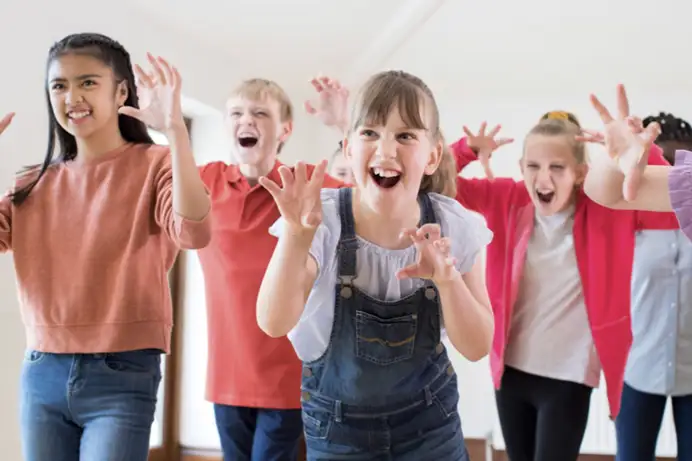
Background Knowledge
Multisensory instruction is an instructional focus that assumes that students learn better if they are taught using multiple modalities or senses. These include visual, auditory, tactile, and kinesthetic. For example, as students connect their bodies to their words and thoughts, they can deepen their understanding and broaden their connections.
The Dramatic Arts can be overwhelming for students and teachers. One of the easiest ways to ease into the dramatic arts is to implement Reader's Theater in the classroom. With minimal props and preparation and no memorization, students can practice fluency. Once teachers and students are comfortable with Reader's Theater, there are other ways to ease into dramatic arts. Drama circles are similar to the "I Have, Who Has" game. Randomly give students cards that have an ending and a beginning. When the circle begins, students listen to the first reader and jump in to read their card if it logically follows what they heard the previous reader say. Students actively listen to follow a story and practice prosody as the story moves through the circle. Tableau is an easy way to give students a kinesthetic way to show their learning. A Tableau is a still form with no talking. Students use their bodies to "freeze" a moment in time. It would be a great way to recreate a story or a historical event.
Dance is an excellent way for students to involve their bodies in their learning. Dance encourages students to collaborate and think critically about solving problems. Dance helps students' memory and helps them think through order and sequence in the patterns of the choreography. The choreographic process can mirror the engineering design process and supports breaking a task into its parts and solving a problem.
Integrating dramatic arts and dance into the content curriculum in schools helps teachers create well-rounded students while reaching students through the tactile and kinesthetic modalities.
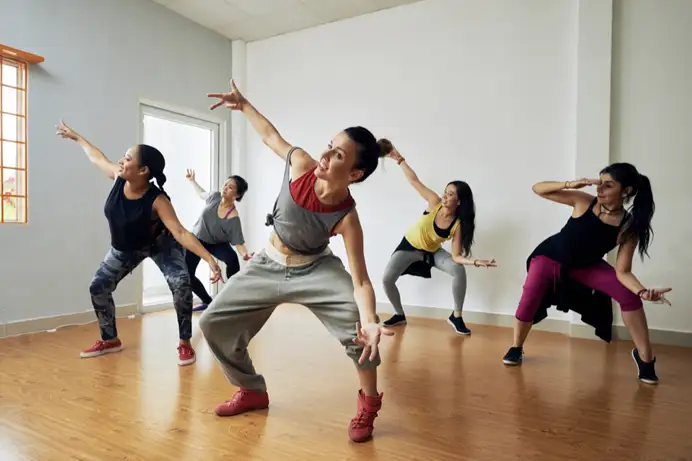
ACTIVITIES
Dance in the Classroom
- Introduce students to the idea of moving their bodies to express themselves by reading How Do You Dance? by Thyra Heder (ISBN 9781419734182). Have students move their bodies to represent a given word.
- Explore different types of dance by reading Feel the Beat: Dance Poems that Zing from Salsa to Swing by Marilyn Singer (ISBN 9780803740211). Play different types of music and have students move their bodies using the various forms of dance described in the book.
-
Learn more about how students can practice storytelling through dance here.
- Watch this video from Books in Motion for an example.
- Analyze The Nutcracker. Students apply what they have learned about ballet and storytelling with pantomime.
- Integrate coding with dance by teaching students to Code a Dance Party. After modeling the process and dancing together, students can work in pairs or small groups to code a dance for the entire class.
- Students can use dance to express scientific ideas. This resource from the Museum of Science in Boston integrates dance and simple machines. Photosynthesis is featured in this dance.
- Learn more about using dance in the classroom here.
- Register for free to explore eleven free lesson plans to incorporate dance.
-
Dance can be used to enhance instruction in the English classroom, from literary analysis to the writing process. Find more ideas on using dance in English class from the Kennedy Center.
- Learn about Prima ballerina, Misty Copeland's experience of falling in love with ballet in Bunheads by Misty Copeland (ISBN 9780399547645). Use dance to express Misty's feelings throughout the story.
-
Use dance in math class to support instruction in patterns, angles, symmetry, geometry, and more.
- Read more about using dance in Math class.
- Get ideas about incorporating math and dance as students learn about angles.
- Hear from the founder of Math in your Feet and check out some Math in Your Feet Starter Lesson Plans to incorporate into your classroom.
- PBS Learning Media has excellent resources for dance in the classroom.
- Read When Langston Dances by Kaija Langley (ISBN 9781534485198). Pair this fiction text with a nonfiction article about how ballet benefits basketball players or with one that compares Steph Curry's movements to a ballerina's (if you are a NY Times subscriber).
- You might run into resistance as you implement dance in the classroom. Help students overcome their reservations by reading Elephants Cannot Dance by Mo Willems (ISBN 9781423114109) or Giraffes Can't Dance by Giles Andreae (ISBN 9780545392556)
- Use TeachersFirst list of dance resources to enhance instruction.
Drama in the Classroom
- Amazing Grace by Mary Hoffman (ISBN 9780803710405) is a great way to introduce students to the dramatic arts.
- TeachersFirst has resources for readers theater, plays, and acting to support integrating these drama forms in the classroom.
- Explore the many forms of drama that you can use in your classroom.
- Tableau can be very effective in the classroom. By having students freeze their bodies in scenes that depict a snapshot in time, teachers can see if students have been able to synthesize the main idea of the lesson. Get kids thinking about moments in time by reading A Moment in Time by Jennifer Butenas (ISBN 9780984003914). Ask the students to work in groups to show a moment in time from the school day. Below are some resources to support using Tableau in the Classroom.
- Look at the ways to use creative drama in the classroom.
- Read Alaina and the Great Play by Eloise Greenfield (ISBN 9781733686525) and discuss improvisation. Students can practice improvisation using any familiar readers theater scripts.
- Learn how to use Drama Circles in the classroom. These are great ways to practice prosody in the reading class. Integrate social studies with this Civil War Drama Circle.
- See how all of the elements of the dramatic arts come together when shy Amandina puts on an original play in Amandina by Sergio Ruzzier (ISBN 9781596432369).
- Using Fun Drama Games and Activities and Pantomime Ideas and Games, students could be divided into teams to play Human Props. Consider awarding points for guessing the individual props correctly and another point for the location defined by the "props."
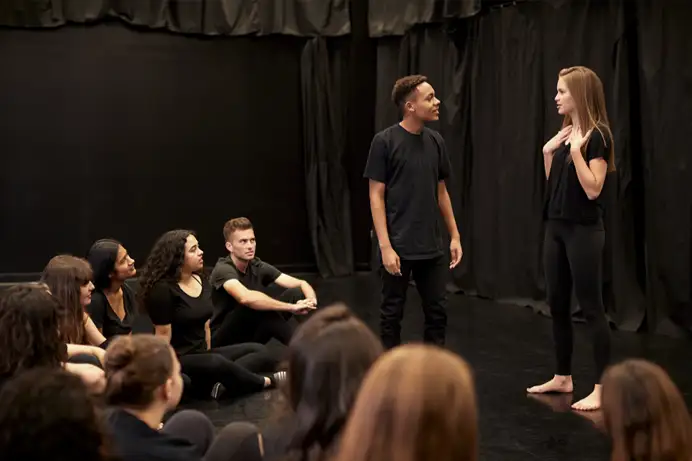
EXTENSIONS
Bring It All Together
- Encourage students to write an original play about something they are learning. They can incorporate dance into the drama. Don't forget to record the performance!
Multiple Perspectives
- After learning about and practicing different forms of dance and drama in the classroom, challenge students to take one topic and approach it using the various genres. For example, if your students are learning about photosynthesis, one group can represent photosynthesis with dance while another group uses tableau, and a third writes a reader's theater script. For an added challenge, ask each group to represent the topic using two different forms.
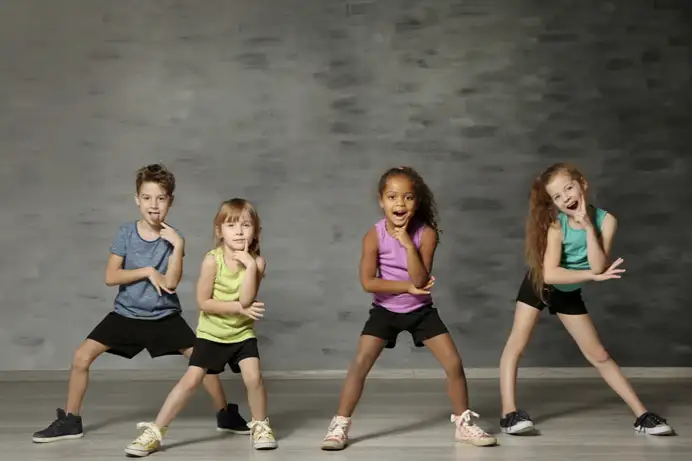
CORRELATION TO STANDARDS
-
AASL National School Library Standards
- Inquire Shared Foundation, Think Domain - Learners display curiosity and initiative by: 1. Formulating questions about a personal interest or a curricular topic. 2. Recalling prior and background knowledge as context for new meaning
- Inquire Shared Foundation, Share Domain - Learners adapt, communicate, and exchange learning products with others in a cycle that includes: 1. Interacting with content presented by others. 2. Providing constructive feedback. 3. Acting on feedback to improve. 4. Sharing products with an authentic audience.
- Include Shared Foundation, Share Domain - Learners exhibit empathy with and tolerance for diverse ideas by: 1. Engaging in informed conversation and active debate. 2. Contributing to discussions in which multiple viewpoints on a topic are expressed.
- Include Shared Foundation, Grow Domain - Learners demonstrate empathy and equity in knowledge building within the global learning community by: 1. Seeking interactions with a range of learners.
- Collaborate Shared Foundation, Think Domain - Learners identify collaborative opportunities by: 1. Demonstrating their desire to broaden and deepen understandings. 2. Developing new understandings through engagement in a learning group. 3. Deciding to solve problems informed by group interaction.
- Collaborate Shared Foundation, Create Domain - s Learners participate in personal, social, and intellectual networks by: 1. Using a variety of communication tools and resources. 2. Establishing connections with other learners to build on their own prior knowledge and create new knowledge.
- Collaborate Shared Foundation, Grow Domain - Learners actively participate with others in learning situations by: 2. Recognizing learning as a social responsibility.
- Explore Shared Foundation, Think Domain - Learners develop and satisfy personal curiosity by: 1. Reading widely and deeply in multiple formats and writing and creating for a variety of purposes.
- Explore Shared Foundation, Create Domain - Learners construct new knowledge by: 1. Problem solving through cycles of design, implementation, and reflection. Explore Shared Foundation, Share Domain - Learners engage with the learning community by: 3. Collaboratively identifying innovative solutions to a challenge or problem.
- Explore Shared Foundation, Grow Domain - Learners develop through experience and reflection by: 1. Iteratively responding to challenges. 2. Recognizing capabilities and skills that can be developed, improved, and expanded. 3. Open-mindedly accepting feedback for positive and constructive growth.
-
ISTE Standards for Students
- Empowered Learner - 1b. Students build networks and customize their learning environments in ways that support the learning process. 1c. Students use technology to seek feedback that informs and improves their practice and to demonstrate their learning in a variety of ways.
- Knowledge Constructor - 3d. Students build knowledge by actively exploring real-world issues and problems, developing ideas and theories, and pursuing answers and solutions.
- Innovative Designer - 4d. Students exhibit a tolerance for ambiguity, perseverance, and the capacity to work with open-ended problems.
- Global Collaborator - 7c. Students contribute constructively to project teams, assuming various roles and responsibilities to work effectively toward a common goal.
